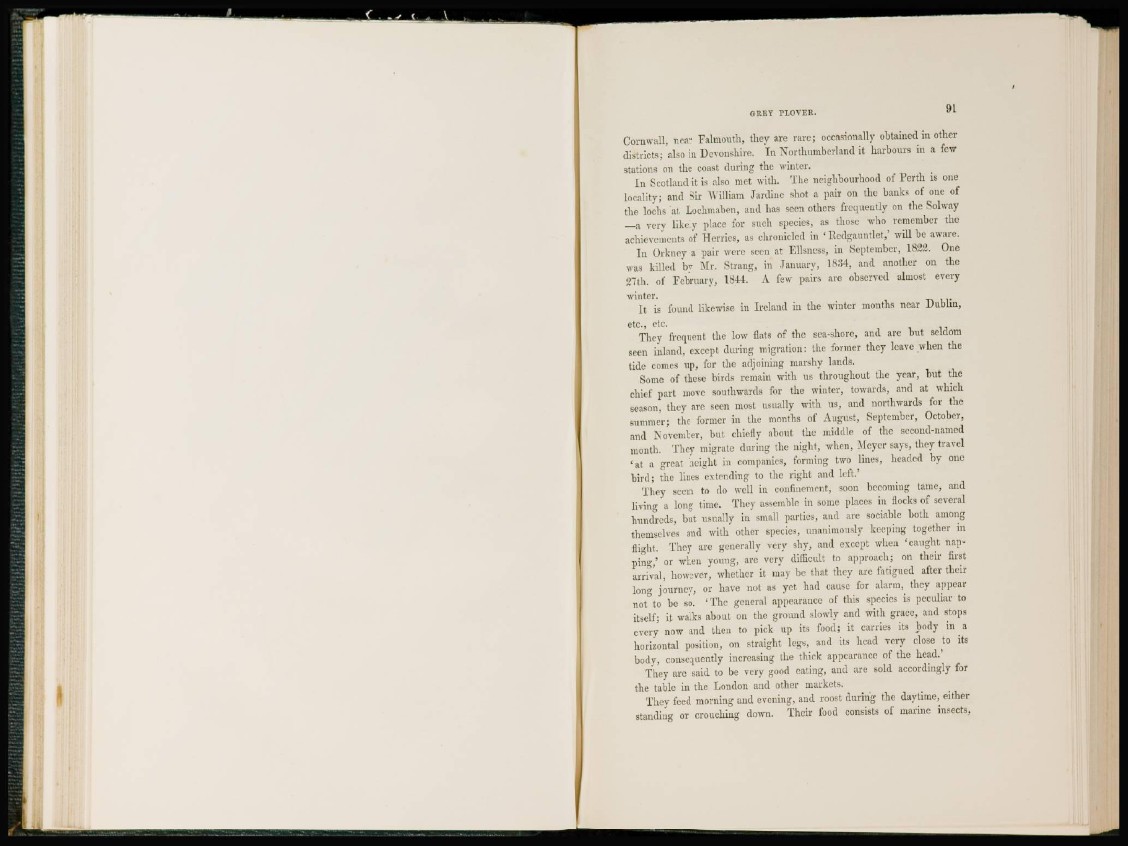
GREY PLOVER.
Cornwall, near Falmouth, they are rare; occasionally obtained in other
districts; also in Devonshire. In Northumberland it harbours in a few
stations on the coast during the winter.
I n Scotland it is also met with. The neighbourhood of P e r t h is one
locality; and Sir William Jardine shot a pair on the banks of one of
the lochs at Lochmaben, and has seen others frequently on the Solway
—a very likely place for such species, as those who remember the
achievements of Hemes, as chronicled in f Bedgauntlet,' will be aware.
I n Orkney a pair were seen at Ellsncss, in September, 1822. One
was killed by Mr. Strang, in January, 1834, and another on the
27th. of February, 1844. A few pairs are observed almost every
winter.
I t is found likewise in Ireland in the winter months near Dublin,
etc., etc.
They frequent the low flats of the sea-shore, and are but seldom
seen inland, except during migration: the former they leave when the
tide comes up, for the adjoining marshy lands.
Some of these birds remain with us throughout the year, but the
chief part move southwards for the winter, towards, and at which
season, they are seen most usually with us, and northwards for the
summer; the former in the months of August, September, October,
and November, but chiefly about the middle of the second-named
month. They migrate during the night, when, Meyer says, they travel
' a t a great height in companies, forming two lines, headed by one
bird; the lines extending to the right and left.'
They sceni to do well in confinement, soon becoming tame, and
living a long time. They assemble in some places in flocks of several
hundreds, but usually in small parties, and are sociable both among
themselves and with other species, unanimously keeping together in
flight. They are generally very shy, and except when 'caught napping,'
or when young, are very difficult to approach; on their first
arrival, however, whether it may be that they arc fatigued after their
long journcv, or have not as yet had cause for alarm, they appear
not to be so. 'The general appearance of this species is peculiar to
itself; it walks about on the ground slowly and with grace, and stops
every now and then to pick up its food; it carries its body in a
horizontal position, on straight legs, and its head very close to its
body, consequently increasing the thick appearance of the head.*
They arc said to be very good eating, and are sold accordingly for
the table in the London and other markets.
They feed morning and evening, and roost during the daytime, either
standing or crouching down. Then food consists of marine insects.